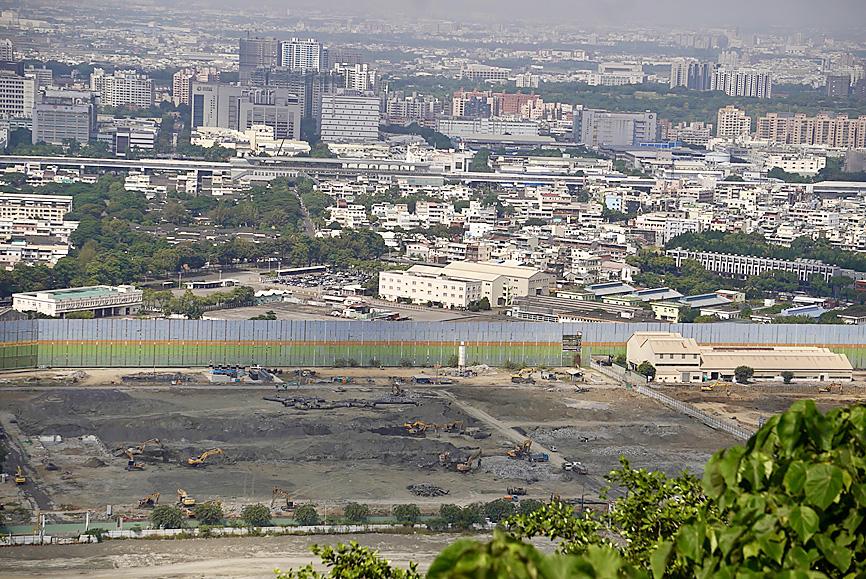A plan by Taiwan Semiconductor Manufacturing Co (TSMC, 台積電) to build a fab in Japan in a joint venture with a subsidiary of Sony Group Corp aims to reinforce ties with the Japanese firm, an industry expert said.
The plan differs from TSMC’s investments in China and the US, in which the chipmaker holds the entire stake, said Ray Yang (楊瑞臨), a supervisor at the Industrial Technology Research Institute’s (工業技術研究院) Industrial Economics and Knowledge Center.
TSMC’s wholly owned investments have prioritized proximity to its clients in the US and China, Yang said during an interview with the Central News Agency.

Photo: CNA
“This time, TSMC has changed course to set up a joint venture with Sony’s wholly owned subsidiary,” Yang said. “I think the chipmaker wants closer cooperation with its Japanese partner in specialty process development, as Sony is a leading contact image sensor supplier in the world.”
TSMC on Wednesday said that it would invest up to US$2.12 billion in the joint venture, called Japan Advanced Semiconductor Manufacturing Inc (JASM), making it the majority shareholder. Sony Semiconductor Solutions Corp, a wholly owned subsidiary of Sony, is to invest US$500 million. The factory is to be built in Kumamoto Prefecture.
Construction of the factory is set to begin next year and production is expected to begin in 2024. The planned fab would make 12-inch wafers using 22-nanometer and 28-nanometer technology, with a monthly capacity of 45,000 wafers, TSMC said.
Wholly owned factories allow TSMC to protect its intellectual property, Yang said, adding that the joint venture in Japan is expected to help the firm work closely with Sony, as well as the Japanese government and academia.
“I think JASM will play a critical role in Japan’s semiconductor industry,” he said.
Also on Wednesday, TSMC said it would build a new plant in Kaohsiung to focus on 7-nanometer and 28-nanometer chips. Construction of the plant is scheduled to begin next year and mass production is expected to start in 2024.
While TSMC did not disclose the financial terms for the Kaohsiung plant, its board approved a capital budget of about US$9.04 billion.
The plant would help TSMC diversify water supply risks amid worries about a long-term water shortage in Taiwan, said Arisa Liu (劉佩真), an economist with the Taiwan Institute of Economic Research (台灣經濟研究院).
TSMC has wafer plants in Hsinchu City, Taichung and Tainan.
The Kaohsiung City Government said it would start building two water recycling plants in 2023 to supply about 30,000 tonnes of water per day to TSMC.
The wafer plant is not expected to compete with households for water supply, the city government said.
Kaohsiung Mayor Chen Chi-mai (陳其邁) said the city is preparing a plot that used to house a CPC Corp, Taiwan (台灣中油) naphtha cracker for the new wafer plant.
The plot is expected to be ready for construction in the middle of next year, Chen said.
The investment would enable the city to build a semiconductor industry cluster, which would help the nation to narrow the north-south development gap, he added.

TECH BOOST: New TSMC wafer fabs in Arizona are to dramatically improve US advanced chip production, a report by market research firm TrendForce said With Taiwan Semiconductor Manufacturing Co (TSMC, 台積電) pouring large funds into Arizona, the US is expected to see an improvement in its status to become the second-largest maker of advanced semiconductors in 2027, Taipei-based market researcher TrendForce Corp (集邦科技) said in a report last week. TrendForce estimates the US would account for a 21 percent share in the global advanced integrated circuit (IC) production market by 2027, sharply up from the current 9 percent, as TSMC is investing US$65 billion to build three wafer fabs in Arizona, the report said. TrendForce defined the advanced chipmaking processes as the 7-nanometer process or more

China’s Huawei Technologies Co (華為) plans to start mass-producing its most advanced artificial intelligence (AI) chip in the first quarter of next year, even as it struggles to make enough chips due to US restrictions, two people familiar with the matter said. The telecoms conglomerate has sent samples of the Ascend 910C — its newest chip, meant to rival those made by US chipmaker Nvidia Corp — to some technology firms and started taking orders, the sources told Reuters. The 910C is being made by top Chinese contract chipmaker Semiconductor Manufacturing International Corp (SMIC, 中芯) on its N+2 process, but a lack

Who would not want a social media audience that grows without new content? During the three years she paused production of her short do-it-yourself (DIY) farmer’s lifestyle videos, Chinese vlogger Li Ziqi (李子柒), 34, has seen her YouTube subscribers increase to 20.2 million from about 14 million. While YouTube is banned in China, her fan base there — although not the size of YouTube’s MrBeast, who has 330 million subscribers — is close to 100 million across the country’s social media platforms Douyin (抖音), Sina Weibo (新浪微博) and Xiaohongshu (小紅書). When Li finally released new videos last week — ending what has

OPEN SCIENCE: International collaboration on math and science will persevere even if the incoming Trump administration imposes strict controls, Nvidia’s CEO said Nvidia Corp CEO Jensen Huang (黃仁勳) said on Saturday that global cooperation in technology would continue even if the incoming US administration imposes stricter export controls on advanced computing products. US president-elect Donald Trump, in his first term in office, imposed restrictions on the sale of US technology to China citing national security — a policy continued under US President Joe Biden. The curbs forced Nvidia, the world’s leading maker of chips used for artificial intelligence (AI) applications, to change its product lineup in China. The US chipmaking giant last week reported record-high quarterly revenue on the back of strong AI chip